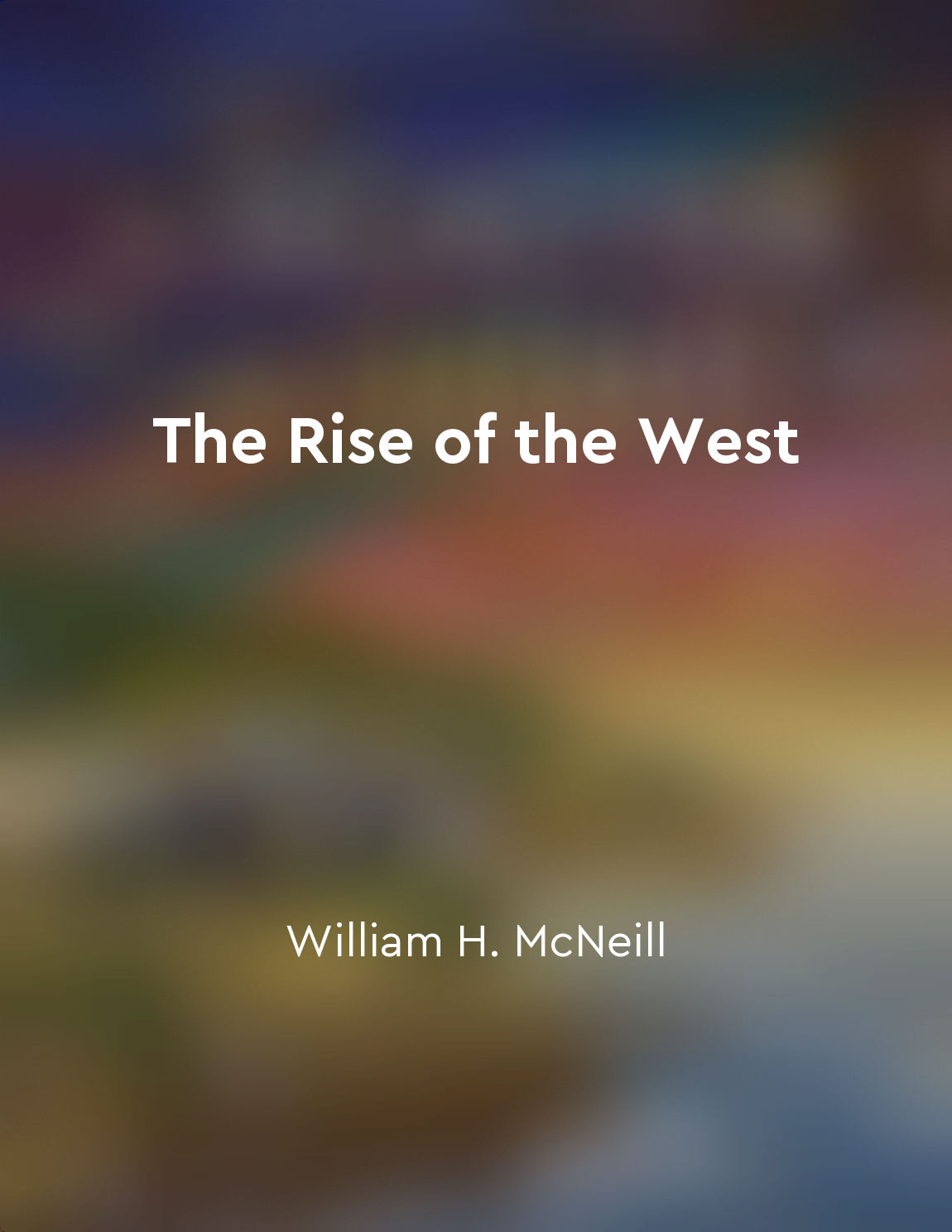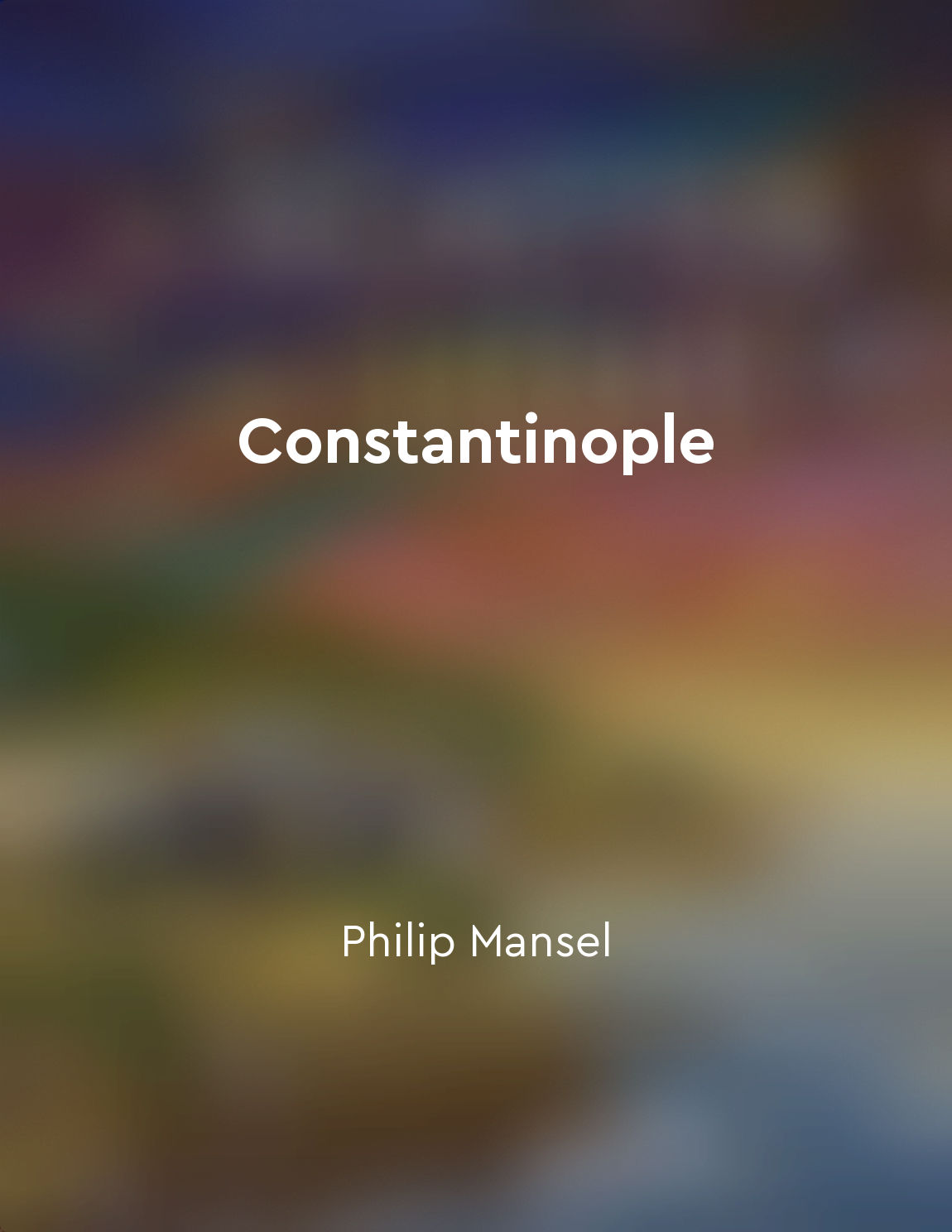The Eastern Empire outlasted the Western Empire from "summary" of The Decline and Fall of the Roman Empire by Edward Gibbon
The Roman Empire, once a powerful and vast entity, eventually faced its decline and eventual fall. The division of the empire into Eastern and Western halves marked a significant turning point in its history. While the Western Empire succumbed to various internal and external pressures, the Eastern Empire continued to survive and even thrive for centuries to come. The Eastern Empire, also known as the Byzantine Empire, had certain advantages that helped it to outlast its Western counterpart. One key factor was its geographic location, which allowed it to be better protected from invading forces. The Eastern Empire's capital, Constantinople, was situated on a strategically advantageous site surrounded by water on three sides, making it easier to defend against attacks. Furthermore, the Eastern Empire benefited from a more stable political and social environment. The Byzantine rulers were often able to maintain a strong central authority and effectively govern their vast territories. In contrast, the Western Empire struggled with political instability, frequent changes in leadership, and internal conflict, which weakened its ability to withstand external threats. Additionally, the Eastern Empire had a more prosperous economy compared to the Western Empire. Constantinople served as a major hub of trade and commerce, connecting Europe to Asia and Africa. The Byzantines were able to generate wealth through trade, taxation, and other economic activities, which helped to fund their military campaigns and maintain their empire's strength. Despite facing its own share of challenges and setbacks, such as invasions by various foreign powers and internal power struggles, the Eastern Empire managed to persevere and even experience periods of cultural and intellectual flourishing. The Byzantine Empire's longevity can be attributed to a combination of factors, including its strategic location, stable governance, economic prosperity, and cultural achievements.- The Eastern Empire's ability to outlast the Western Empire highlights the complex and multifaceted nature of the decline and fall of the Roman Empire. While the Western Empire crumbled under the weight of its own internal weaknesses and external threats, the Eastern Empire managed to navigate through turbulent times and leave a lasting legacy that would shape the course of history for centuries to come.
Similar Posts

The West's rise impacts global power dynamics
The emergence of Western Europe as the dominant power in the world has had a profound impact on global power dynamics. The rise...
The Battle of Yarmouk
The Battle of Yarmouk was a significant event that took place during the time of the Prophet Muhammad (Peace be upon him). It w...
The kingdom of Israel was founded by King Saul
The kingdom of Israel came into being with the establishment of its first king, Saul. Saul was chosen by the prophet Samuel to ...
The fall of Rome had farreaching consequences for Western civilization
The fall of Rome was not just a single event in history, but rather a series of setbacks that gradually eroded the once mighty ...

Topkapi Palace
The Topkapi Palace stands on the site of the first Ottoman palace in Istanbul. Over the centuries, it has been much altered and...
Public health measures and effectiveness
The fate of Rome hinged on the effectiveness of public health measures. Disease was a constant threat, stalking the crowded cit...

Religious center
The religious center of Constantinople was a key element of the city's identity. As the capital of the Byzantine Empire, Consta...
The leadership of emperors like Nero and Caligula contributed to Rome's decline
The leadership of certain emperors, such as Nero and Caligula, played a significant role in the decline of the Roman Empire. Th...

